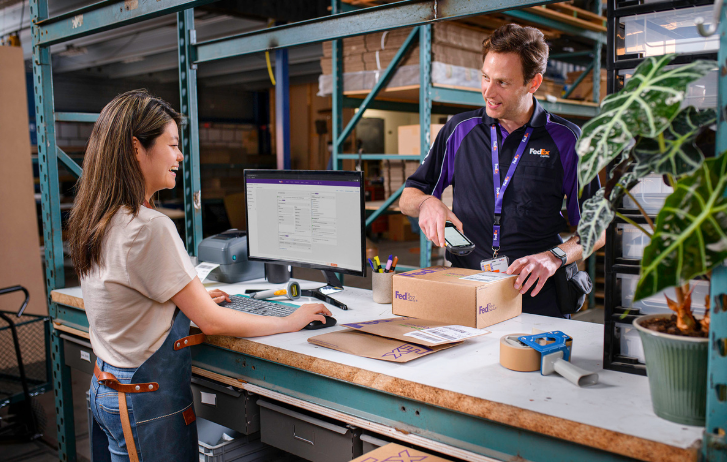
How SMEs Can Overcome Barriers To Cross-Border Trade In Asia Pacific
By Kawal Preet | August 11, 2025
Small businesses in Asia Pacific often face major trade obstacles, but smarter tools and stronger networks can unlock global growth opportunities.
- SMEs make up the bulk of businesses in Asia Pacific. Yet, many find it hard to break into global markets.
- Many SMEs spend too much time on navigating regulations and reacting to disruptions, taking attention away from business growth.
- SMEs need practical solutions that offer clarity, agility, and connectivity, helping them stay competitive in international markets.
In Asia Pacific, small and medium-sized enterprises (SMEs) do the heavy lifting for the region’s economy.
Over 90% of all businesses in the region are SMEs, contributing between 40% and 60% of the region’s GDP. They are the backbone of Asian economic growth – driving innovation, generating employment, and fostering resilience across diverse markets.
As trade becomes increasingly borderless, small businesses must contend with the complex possibilities of today’s trade landscape. The intricacies of cross-border trade offer both challenges and opportunities – entrepreneurs need to navigate ever-evolving regulations, shifting supply chains, and rapidly changing consumer demands.
While they may not operate on the scale of global enterprises, SMEs bring something equally powerful to the table: agility, deep community roots, and an entrepreneurial spirit that propels transformation.
SME global trade barriers are high, but not insurmountable
Small businesses excel at being agile and entrepreneurial, but they enter global trade with fewer resources than large multinationals. They need to move quickly and adapt strategically with lean teams and limited tools.
In our experience, these are three of the most common challenges that SMEs face:
1. Digital transformation hurdles
Digital transformation among SMEs is still gaining traction. While digital adoption has accelerated since the pandemic, cross-border trade for SMEs is frequently held back by outdated infrastructure, lack of digital skills, and weak cybersecurity.
In fact, a 2024 study by the Singapore University of Social Sciences (SUSS) reveals that only 12% of SMEs in Asia and Europe currently use advanced data analytics, largely due to cost concerns and lack of awareness. This limits their ability to tap into insights that could save costs and optimize resource allocation, giving them a competitive edge in cross-border growth.
2. Regulatory complexity
SMEs must navigate a patchwork of trade rules, tariffs, data privacy laws, and ESG requirements – often without the support of dedicated cross-border compliance teams.
In APAC, burdensome red tape and non-tariff barriers (NTBs) remain significant obstacles, making it challenging for businesses to scale across borders. Regional trade agreements like the Regional Comprehensive Economic Partnership (RCEP) help but may not fully resolve these regulatory bottlenecks.
3. Supply chain volatility
Small businesses often rely heavily on a few key suppliers or buyers. However, this leaves them with limited buffers to absorb disruptions caused by geopolitical tensions, shipping delays, or climate-related events.
Countries like Singapore may offer some support to help SMEs build resilience and optimize operations through grants or incentives. But across the rest of the region, most SME support programs are too fragmented to significantly improve the reach and impact of SMEs, making it harder for entrepreneurs to overcome their structural disadvantages when trading globally.
What SMEs need now: Clarity, agility, and connectivity
To overcome these barriers and step confidently onto the world stage, SMEs require three essential enablers: clarity, agility, and connectivity.
1. Gaining clarity with the right insights
SMEs need clear, actionable insights to confidently navigate this dynamic landscape of trade regulations and policy shifts. A single change in tariffs or compliance requirements can disrupt operations overnight, increase costs, and make it harder for SMEs to stay competitive.
Cross-border compliance continues to be one of the most persistent challenges for SMEs. Complex tariff classifications, extensive documentation requirements, and frequent regulatory updates can drain valuable time and resources away from business growth.
At FedEx, we’re committed to simplifying compliance by providing clear insights and updates. Tools like the FedEx Tariff Hub offer businesses practical guidance to better understand regulatory changes. Another useful solution is the FedEx Import Tool, which allows businesses to manage the clearance of import shipments and receive notifications if any clearance steps are incomplete.
With these tools providing timely insights, SMEs can focus on what matters most: growing their businesses.
2. Unlocking agility with digital tools
In an environment where change is constant, agility is everything. Whether facing a supply chain disruption, an unexpected surge in demand, or an opportunity in a new market, SMEs must be equipped to act quickly and decisively.
Leveraging technology is no longer an option; it’s now a necessity. Digital transformation enables sharper forecasting, real-time visibility, and more informed decision-making.
SMEs can explore AI-driven tools like predictive analytics platforms, which flag emerging trends and highlight potential risks before they escalate. Scenario planning software is another powerful tool, enabling businesses to test different scenarios – such as supply chain disruptions – and prepare for them in advance.
Supply chain visibility tools such as FedEx Surround add another layer of intelligence, offering real-time insights into potential delays or bottlenecks. Together, these tools give SMEs the clarity to act quickly and the agility to adapt.
3. Leveraging connectivity for scalable growth
Connectivity – to customers, markets, and enabling ecosystems – is the bridge to scalable growth. Seamless cross-border connections can transform SMEs from local enterprises into global competitors.
New trade corridors are emerging in APAC, lowering trade barriers and unlocking new opportunities for cross-border growth. For example, the rise of opportunities in the China-Southeast Asia corridor enables businesses to benefit from better market access and lower tariffs when trading regionally. SMEs that embrace connectivity will be best positioned to build agile supply chains that flex with the future.
At FedEx, we are investing in the infrastructure that powers global connectivity for small businesses. From new flight routes linking China, India, and Europe to our first direct flight from Singapore to Anchorage, we’re continually expanding capacity and enhancing connectivity.
Charting the next chapter of growth for SMEs
SMEs have long been a quiet yet powerful driver of Asia Pacific’s economic growth. As the region enters a new era of transformation, these businesses are not only adapting, but also leading the way.
At FedEx, we’re investing in tools that support cross-border trade for SMEs – with intelligent delivery solutions, scalable logistics infrastructure, and a digitally enabled network designed for agility. Backed by our global reach and customs expertise, we empower SMEs to compete confidently and grow sustainably in an increasingly connected world.
With the right solutions and support, SMEs can shape the future, not just keep up with it.
SHARE THIS STORY
- 85% Of APAC Businesses Plan To Expand Into Europe, According To New FedEx Report
- Generative AI: A New Frontier
- How To Ship A Giant Panda
- The Rise Of Intra-Asia Trade: Opportunities In The China-Southeast Asia Corridor
- Where Do Old Planes Go When They Retire?
- What’s So Dangerous About Coconuts? Your Guide To Dangerous Goods Logistics
Sign up now and save on your shipping rates!
Sign up now and earn discounts by shipping instantly with FedEx Ship ManagerTM at fedex.com.
Recommended For You

How To Expand Your E-Commerce Business In 5 Key Steps
A successful market expansion strategy relies on meticulous research into market complexities, customer demand and operational readiness.
Read More
Global Trade In Flux: How APAC SMEs Can Turn Uncertainty Into Opportunity
Learn how SMEs can adapt to global trade policy changes and stay competitive amid shifting regulations across Asia Pacific in 2025.
Read More
The Rise Of Asia-Europe Trade – And What It Means For APAC SMEs
Get ready to tap into growing European demand for Asian exports. Explore successful cross-border shipping strategies and how to decode market trends.
Read More


